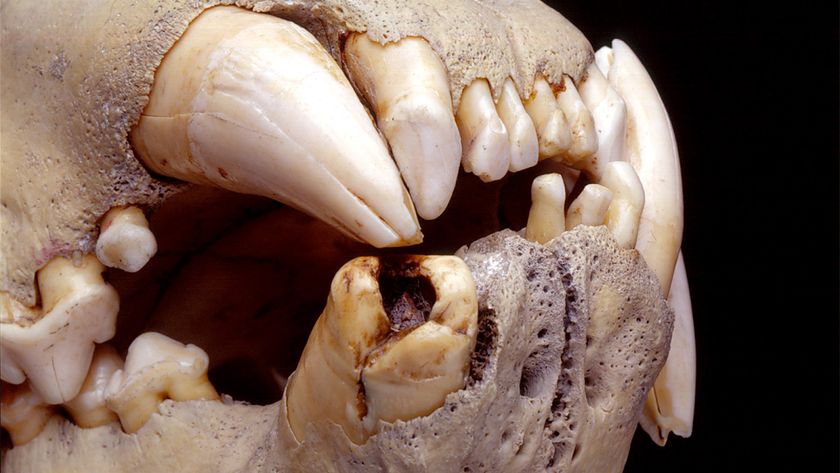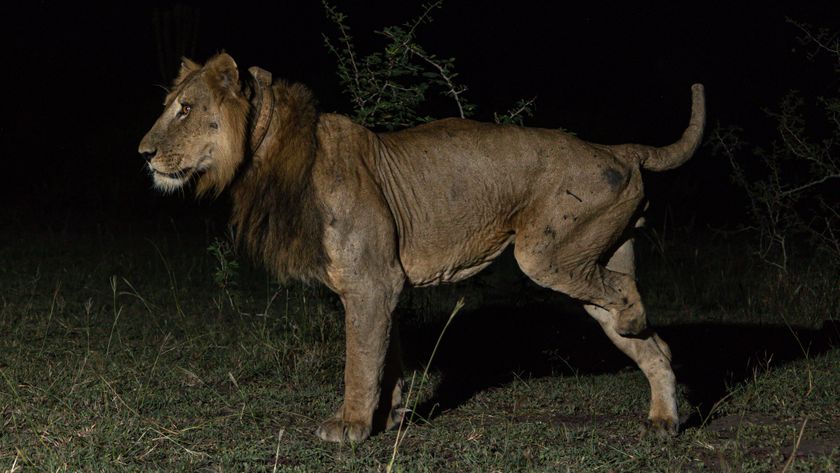Did Lioness Really Befriend Baby Antelope?
While documenting a lion hunt in Uganda recently, a photographer came across a surprising sight: a lioness seeming to "adopt" a baby antelope after killing and eating its mother.
In photographer Adri De Visser's photo series of the incident, which has been reproduced all over the Web in recent days, the lioness nuzzles the tiny, orphaned calf, picks it up by the scruff of its neck and hauls it off "like one of her own cubs," as the Daily Mail put it. According to many media outlets, the lioness's maternal instincts kicked in when confronted with the poor, defenseless youngster.
But is that really what happened?
Far from it. Everybody likes a good story about a lion lying down with a lamb. But in nature, "the lamb always gets eaten," said ecologist Craig Packer, director of the Lion Research Center at the University of Minnesota. "It's quite common for cats to play with their prey and they can look very gentle doing it. But it always ends in tears," he said.
According to Packer, the scene depicted in the photos is familiar to anyone who has studied lions, and to anyone who has ever watched their cat catch a mouse. "These are just variations on the theme of cat-and-mouse, where cats capture their prey and play with it until they either get bored and leave it or get hungry and eat it," he told Life's Little Mysteries.
Lions and other large cats can be surprisingly gentle when playing with young, feeble prey, he noted, but only in order to keep the creature alive and prolong the game of cat-and-mouse. [What Would Happen If a Lion Fought a Tiger?]
Despite being in danger, the baby kob (a type of antelope) in the photos doesn't try to escape the lion. Packer explained that its flight instinct hasn't kicked in yet. Like baby impalas and gazelles, baby kobs are "hiders." While their mothers graze, they hide in the underbrush, staying still and docile to minimize their chance of detection. "So, when they are detected, they just kind of stand around," Packer said. "They don't know how to run away. When they see the lion, they are responding to the presence of a large, warm body."
Sign up for the Live Science daily newsletter now
Get the world’s most fascinating discoveries delivered straight to your inbox.
Perhaps, in this case, the lioness eventually killed and ate the baby kob. Perhaps she got bored before she got hungry, and let the creature wander off and starve to death. "Nobody follows these things so persistently that they can tell you what happens at the end of the encounter," Packer said. "But either way, nature is not 'The Lion King,' with the warthog and all that. This story ended."
Follow Natalie Wolchover on Twitter @nattyover or Life's Little Mysteries @llmysteries. We're also on Facebook & Google+.
Natalie Wolchover was a staff writer for Live Science from 2010 to 2012 and is currently a senior physics writer and editor for Quanta Magazine. She holds a bachelor's degree in physics from Tufts University and has studied physics at the University of California, Berkeley. Along with the staff of Quanta, Wolchover won the 2022 Pulitzer Prize for explanatory writing for her work on the building of the James Webb Space Telescope. Her work has also appeared in the The Best American Science and Nature Writing and The Best Writing on Mathematics, Nature, The New Yorker and Popular Science. She was the 2016 winner of the Evert Clark/Seth Payne Award, an annual prize for young science journalists, as well as the winner of the 2017 Science Communication Award for the American Institute of Physics.












